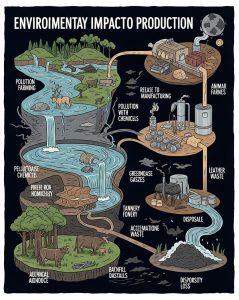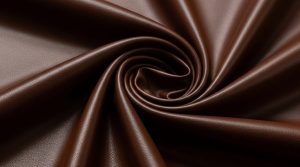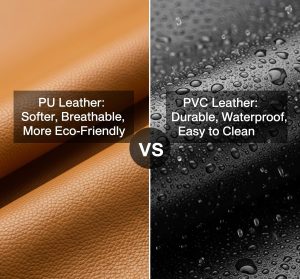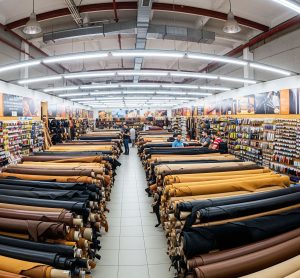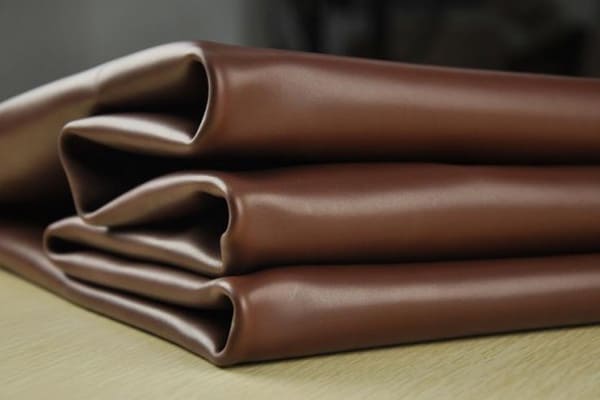
Ah, le cuir, ce tissu luxueux qui évoque la sophistication et crie : "Je suis trop cher !". Si vous êtes déjà entré dans un magasin et avez regardé avec envie une veste en cuir, avant d'être ramené à la réalité par l'étiquette du prix, vous n'êtes pas seul. Comprendre le coût du cuir peut donner l'impression de déchiffrer un code secret - un code qui implique des peaux d'animaux, des processus de tannage complexes et peut-être même un peu de magie. Mais n'ayez crainte ! Nous sommes là pour éplucher les couches de cette énigme matérielle et explorer ce qui rend le cuir si précieux, pourquoi il vaut la peine de faire des folies, et si votre portefeuille peut survivre à cette rencontre. Prenez donc une tasse de café, installez-vous confortablement et plongeons dans le monde fascinant (et parfois déroutant) du prix du cuir, où la seule chose plus complexe que les coûts est le savoir-faire artisanal qui les sous-tend !
Comprendre le coût : Qu'est-ce qui fait que le cuir est de première qualité ?
Le coût d'un tissu en cuir peut varier considérablement et plusieurs facteurs contribuent à son prix élevé. Tout d'abord, le type de peau utilisé joue un rôle crucial ; par exemple, le cuir pleine fleur, dérivé de la couche supérieure de la peau, conserve son grain naturel et est connu pour sa durabilité et son caractère unique. Cette qualité s'accompagne souvent d'un prix plus élevé en raison de l'importance du traitement nécessaire et de la disponibilité limitée des peaux de haute qualité. En outre, le processus de tannage, c'est-à-dire la façon dont la peau est traitée pour devenir du cuir, peut également avoir une incidence sur le coût. Le tannage végétal traditionnel, par exemple, est un processus qui prend du temps et permet d'obtenir un cuir riche et durable, mais son prix est souvent plus élevé que celui des méthodes plus rapides comme le tannage au chrome. D'autres facteurs tels que les pratiques d'approvisionnement, l'origine géographique et le savoir-faire artisanal influencent également le prix final. La compréhension de ces éléments peut donc aider les consommateurs à apprécier la véritable valeur du cuir.
Types de cuir : L'éventail des prix expliqué
Lorsque vous étudiez le coût d'un tissu en cuir, il est essentiel de connaître les différents types disponibles et leur incidence sur le prix. En règle générale, le cuir peut être classé en plusieurs catégories : le cuir pleine fleur, le cuir supérieur, le cuir corrigé et le cuir véritable, chacune ayant son propre éventail de prix. Le cuir pleine fleur, le plus cher, est réputé pour sa durabilité et sa beauté naturelle. Le cuir de grain supérieur, un peu moins robuste mais toujours de grande qualité, est généralement proposé à un prix légèrement inférieur. Le cuir à grain corrigé est traité pour éliminer les imperfections, ce qui peut le rendre plus abordable, mais il sacrifie souvent certaines des caractéristiques naturelles chères aux amateurs de cuir. Enfin, le cuir véritable, souvent fabriqué à partir de peaux de moindre qualité ou de chutes, est le moins cher et peut ne pas offrir la même longévité. En comprenant ces distinctions, les consommateurs peuvent faire des choix éclairés en fonction de leur budget et de la qualité souhaitée.
Qualité contre prix : Investir dans des tissus en cuir durables
En matière de cuir, l'adage "on en a pour son argent" est particulièrement vrai. Investir dans des tissus en cuir de haute qualité peut être considéré comme un engagement à long terme plutôt que comme un simple achat. Si le coût initial peut être plus élevé, le cuir de qualité est souvent plus durable et peut durer de nombreuses années, voire des décennies, s'il est bien entretenu. Cette longévité augmente non seulement la valeur de l'investissement, mais réduit également le besoin de remplacement, ce qui peut s'avérer un choix plus économique à long terme. En outre, le cuir de haute qualité a tendance à se patiner au fil du temps, ce qui donne du caractère et du charme à l'article. Les consommateurs devraient comparer le coût initial à la durée de vie potentielle et à l'attrait esthétique d'un cuir de qualité, ce qui montre clairement que, parfois, le fait de dépenser un peu peut s'avérer extrêmement rentable en termes de satisfaction et de durabilité.
Comparaison entre le cuir et d'autres tissus : L'investissement en vaut-il la peine ?
Lorsque vous évaluez le coût d'un tissu en cuir, il est essentiel de le comparer à d'autres matériaux tels que les tissus synthétiques, le coton et la laine. Si le cuir est plus cher, ses qualités uniques justifient souvent l'investissement. Le cuir est réputé pour sa durabilité ; il résiste à l'usure bien mieux que de nombreux tissus, et dure souvent des années de plus s'il est bien entretenu. En outre, le cuir offre une esthétique intemporelle qui peut rehausser l'aspect de n'importe quel article, qu'il s'agisse d'un vêtement ou d'un meuble. Contrairement à de nombreux matériaux synthétiques, le cuir respire, ce qui le rend confortable à différentes températures. Si l'on tient compte de ces facteurs, la valeur à long terme du cuir peut l'emporter sur le coût initial, en particulier pour les articles à usage intensif comme les vestes ou les sacs à main. Si les solutions moins coûteuses peuvent être attrayantes, elles doivent souvent être remplacées plus fréquemment, ce qui fait du cuir un choix plus économique au fil du temps.
Coûts cachés : Au-delà de l'étiquette de prix du tissu en cuir
Si le coût initial d'un tissu en cuir est souvent au centre des préoccupations, il existe des coûts cachés liés à son achat et à son entretien que les consommateurs doivent prendre en compte. Par exemple, un cuir de haute qualité nécessite un entretien approprié pour conserver son apparence et sa longévité, ce qui peut impliquer d'investir dans des produits de nettoyage spécifiques, des conditionneurs et des traitements imperméabilisants. Un entretien régulier peut s'avérer coûteux, en particulier si vous souhaitez préserver la texture riche et la patine naturelle du cuir. En outre, les réparations des articles en cuir, telles que les rayures ou les éraflures, peuvent également être plus coûteuses que celles des tissus synthétiques. Enfin, si le cuir provient de producteurs éthiques, les consommateurs peuvent être amenés à payer une prime pour les pratiques durables. En comprenant ces coûts cachés, les acheteurs peuvent prendre des décisions plus éclairées et évaluer réellement la valeur de leur investissement dans le cuir.
Alternatives au cuir : Options économiques à prendre en considération
Pour ceux qui aiment l'aspect et le toucher du cuir, mais dont le coût est trop élevé, il existe plusieurs alternatives économiques qui valent la peine d'être explorées. Le faux cuir, également connu sous le nom de cuir végétal, a beaucoup évolué en termes de qualité et d'esthétique. Fabriqué à partir de matériaux synthétiques, il imite l'apparence du cuir véritable sans en avoir le coût. Bien qu'il n'offre pas la même durabilité, les faux cuirs modernes peuvent être étonnamment résistants et plus faciles à nettoyer. En outre, les mélanges de tissus qui intègrent des matériaux tels que la toile ou le denim peuvent donner un aspect robuste, semblable au cuir, pour une fraction du prix. Ces alternatives peuvent être parfaites pour les vêtements décontractés ou les articles qui ne seront pas soumis à un usage intensif. En considérant ces options économiques, les consommateurs peuvent profiter de produits élégants, semblables au cuir, sans en payer le prix fort, tout en s'alignant sur leurs préférences financières et éthiques.
Conclusion
Au terme de notre exploration du cuir et de ses coûts, il est clair qu'investir dans ce tissu intemporel peut être un choix à la fois élégant et judicieux, à condition que vous soyez prêt à l'assumer. De la complexité de l'approvisionnement en peaux de haute qualité aux processus de tannage méticuleux qui les transforment en ce cuir durable et magnifique que nous adorons, tous les aspects contribuent à son prix élevé. Même si vous avez l'impression de faire un bond financier, considérez le cuir comme le grand vin des tissus : il ne fait que s'améliorer avec l'âge, développant un caractère et un charme que les alternatives synthétiques ne peuvent tout simplement pas reproduire. Et si votre budget est serré, ne vous inquiétez pas : il existe de nombreuses options de faux cuir qui vous permettent de profiter de l'aspect cuir tant convoité sans vous ruiner. Que vous soyez prêt à investir dans le vrai cuir ou à explorer des solutions plus économiques, n'oubliez pas que la qualité, la longévité et le style valent chaque centime dépensé. Maintenant, allez de l'avant et profitez de votre voyage en cuir, en évitant peut-être l'achat impulsif d'un sac à main en alligator !




